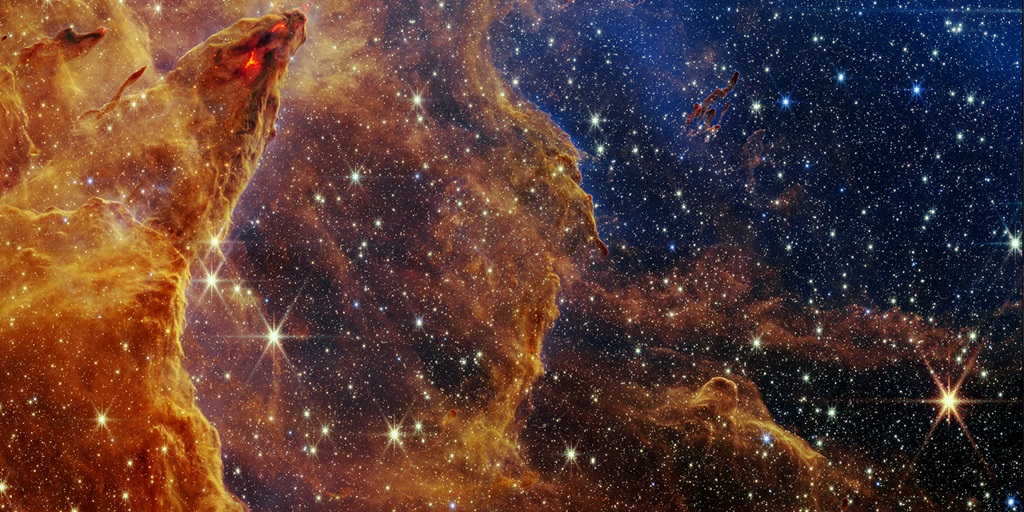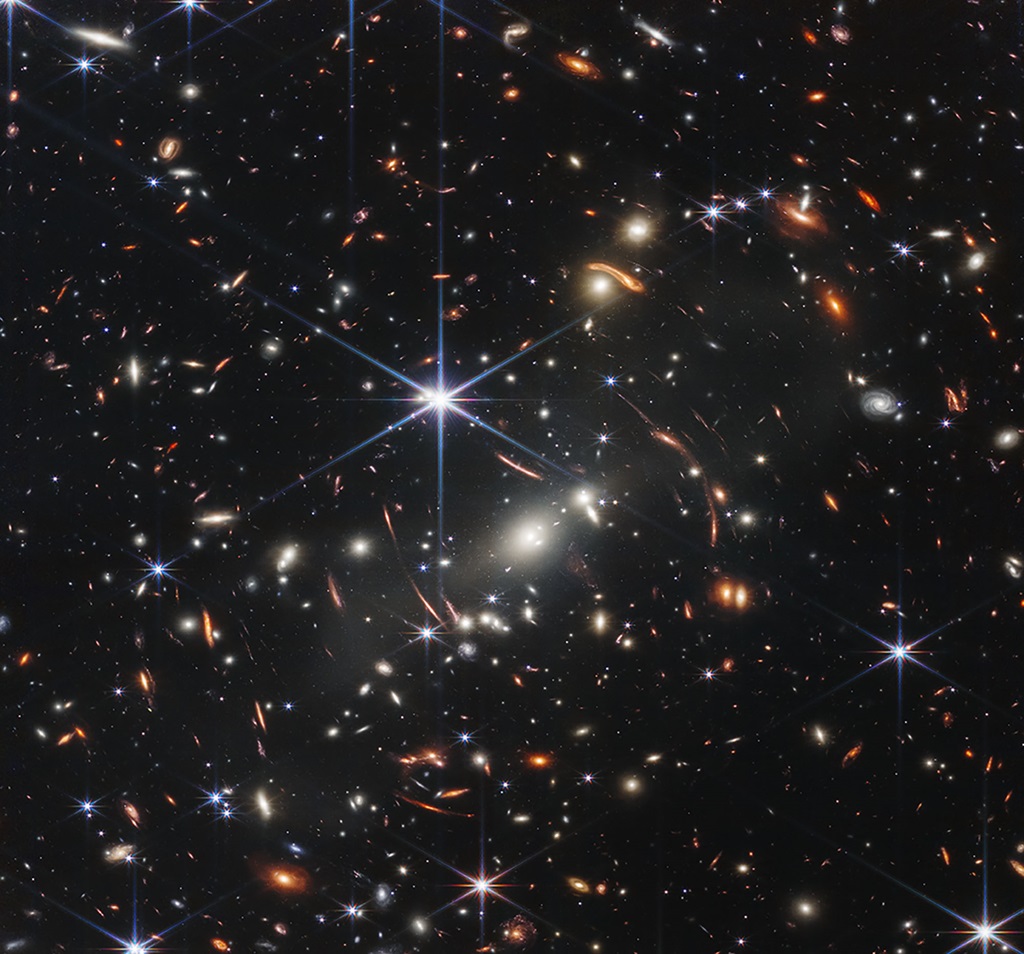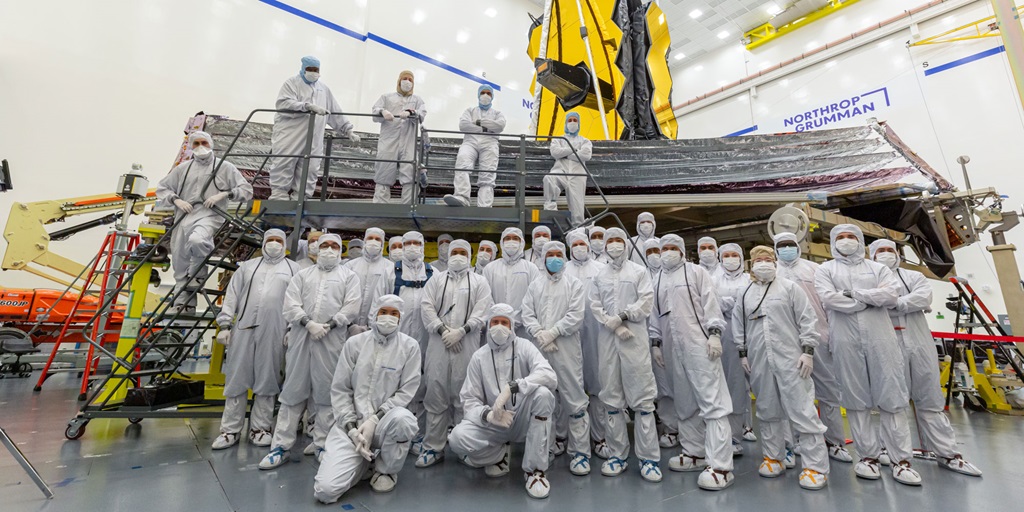From her bunk in the cabin, Krystal Puga would listen to what sounded like the belly of the Earth groaning.
Time Machine to the Cosmos
The James Webb Space Telescope is Changing Our Understanding of the Universe —
Here are 3 of its Top Observations So Far

By Jonathan Beyoghlow
Built in partnership with Northrop Grumman, NASA’s James Webb Space Telescope (Webb) has been making history ever since it was propelled into space in December 2021, revealing never-before-seen details of the early cosmos. Referred to as a time machine, Webb’s powerful instruments use infrared vision to peer back over 13.5 billion years and view the earliest stars and galaxies.
Northrop Grumman led the design and build of the observatory, including Webb’s deployable sunshield and primary mirror backplane, the spacecraft bus and the full integration of the observatory.Webb’s groundbreaking images are helping astronomers answer questions about how the universe began and, ultimately, if there is life beyond Earth. Today, Northrop Grumman is playing a pivotal role to ensure Webb performs optimally in space. In fact, NASA recently awarded the company a contract to provide operational support and maintenance for the spacecraft through 2027. To learn more about how Webb is enabling groundbreaking science as well as the ways Northrop Grumman continues to fuel astronomical discovery, here are three of Webb’s top observations to date.

Observation #1:
Deepest and Sharpest Infrared Image of the Distant Universe
When NASA revealed Webb’s first image in July 2022, humankind’s understanding of the universe took a monumental leap forward. It was the deepest and sharpest infrared image of the distant universe ever generated. Known as Webb’s “First Deep Field,” it is a galaxy cluster overflowing with thousands of galaxies. According to NASA, the area observed was approximately the size of a grain of sand held at arm’s length. Webb used the combined performance of its near-infrared camera (NIRCam) and mid-infrared instrument (MIRI) to observe infrared light from the earliest stars and galaxies stretched billions of years.
“Webb will play a critical role in advancing our understanding of the cosmos by allowing scientists to observe distant galaxies and stars with minimal distortion/interference from other infrared sources,” said Dr. Candace Givens, Northrop Grumman’s vice president, Overhead Persistent Infrared (OPIR) and Geospatial Systems (OGS) Business Unit.
Webb’s ability to detect much farther into the infrared wavelength is groundbreaking. To capture this light and enable Webb to collect such clear images, Northrop Grumman developed an advanced cryocooler system that keeps the MIRI extremely cold.

Observation #2:
Southern Ring Nebula
As part of the unveiling of Webb’s first images, NASA published this picture of the Southern Ring Nebula, located some 2,000 light-years away in the Vela Constellation. Using its NIRCAM and MIRI cameras to observe distant light, Webb observed two stars close to one another with fine rays of light on the periphery and captured the gas and dust emanating from the two stars. Scientists will use Webb to study additional nebulae throughout the cosmos and investigate the types of gas and dust expelled from their structures.
Northrop Grumman also designed the communications systems on the observatory that allows scientists to send and receive data from Webb. Thanks to its reliable network, teams are able to communicate with Webb while it’s a million miles away from earth.

Observation #3:
Pillars of Creation
In 1995, the Hubble Space Telescope stunned the world with its iconic image called the Pillars of Creation. The picture showed towering mountains of gas and dust in the Eagle Nebula, which lies approximately 6,500 light-years away. On October 21, 2022, NASA revealed this updated Webb image of the Eagle Nebula displaying a highly detailed landscape where new stars are forming within thick clouds of gas and dust. Webb used its NIRCam optical instrument to peer through these thick clouds to capture nascent stars. This image was possible because of how stable it is in space. This is a result of the observatory’s pointing system, a process that Northrop Grumman developed specifically for Webb, which allows Webb to stay pointed at a very small region of the sky (smaller than a tenth of a pixel) and ensures a stable image.
In addition, Northrop Grumman designed Webb’s backplane — the support structure for its large gold-plated mirrors — to withstand temperature fluctuations in space. Webb’s backplane is stable to within 40 nanometers, resulting in superior optical performance over the observatory’s field of regard.
Together with NASA and our industry team, Northrop Grumman has won several awards and recognitions for its work on Webb including the National Air and Space Museum’s Michael Collins Trophy, Robert H. Goddard Memorial Trophy from the National Space Club and Foundation, Aviation Week’s Grand Laureate Award, and NASA’s highest honors. It recently won the prestigious Collier Trophy from the National Aeronautic Association, which is the greatest American achievement in aeronautics or astronautics.
Read more about our work on Webb and see how we are defining possible in space.



